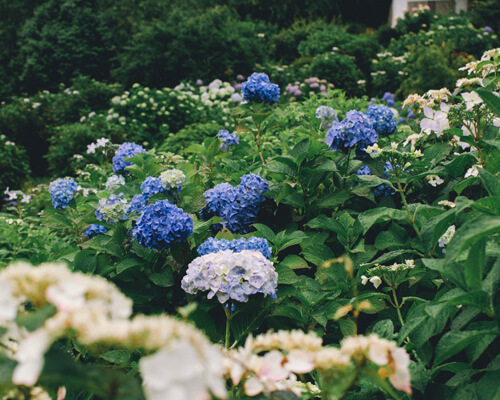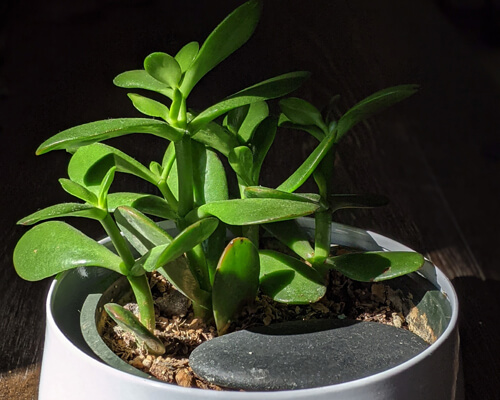How to Propagate Spider Plant?

Do you want to learn how to propagate spider plant? If so, look no further!
Propagating spider plants is a great way for gardeners and plant lovers alike to increase their stock of this attractive, low-maintenance houseplant.
With just a few simple steps and some patience, you’ll be able to grow your collection of these beautiful specimens quickly and easily, all while saving money in the process.
In this blog post, we’ll take a closer look at the different methods available for propagating spider plants as well as tips on how best to ensure success.
How to propagate spider plants in water?
1: Choose a healthy spider plant with several shoots to propagate.
Make sure the leaves are green and free of brown spots, as these could indicate disease or other infections.
2: Using a pair of scissors or pruning shears, cut off a stem from the main plant at a 45-degree angle.
Make sure you leave at least two sets of leaves on each stem. This will help the new stem to absorb water more easily.
You can also remove any damaged or yellowed leaves.
3: Place the cuttings into a vase or jar filled with room temperature water.
Change out the water every other day to keep it clean and prevent bacteria growth.
4: Place the container with cuttings in indirect sunlight and keep it away from direct heat sources.
The ideal temperature for propagation is between 65°F and 80°F (18°C – 27°C).
5: Roots should start to form within two weeks in some cases, but it can take up to three weeks for others depending on conditions like humidity and warmth levels in your home environment.
6: When roots have grown one or two inches long, transplant the cuttings into soil or vermiculite mixed with perlite in equal parts or any potting mix that is free draining yet moisture retaining.
7: Water regularly after planting cuttings in soil, making sure not to over saturate them as this can lead to rot and fungal diseases due to excessive moisture around their roots.
Be sure to always check if there is enough water by poking your finger an inch deep into the soil before watering it again.
How to propagate spider plant in soil?
Step 1: Obtain a spider plant and prepare a potting mix. Choose a potting mix that is well draining, such as one that contains peat moss, perlite, or vermiculite.
Make sure the container chosen is large enough to allow for the growth of the new plants.
Step 2: Plant the spider plant in the potting mix. Gently remove any roots from their original soil with your hands, and then carefully place the plant into the new potting mix and nestle it in with your fingers.
If you wish to propagate several spider plants from one adult plant, you may want to separate them into individual pots.
Step 3: Water the spider plant thoroughly after planting it in its new container.
Use room-temperature water and add just enough so that it begins to drain out of the bottom of the pot when finished.
Do not let water accumulate at the bottom of the pot, remove any excess standing water with a turkey baster or similar device after watering has been completed.
Step 4: Place your potted spider plant in an area that receives bright but indirect light throughout most of the day.
Keep in mind that too much direct sunlight can be detrimental to the health of your spider plants, so avoid placing them near windows or other areas where there is direct sun exposure for extended periods of time.
Step 5: Monitor soil moisture levels weekly by inserting your finger into the topsoil about two inches deep, or until you feel resistance against your fingertip.
If dry or slightly damp, add water until moist but not soggy, prolonged wet soil can cause root rot in spider plants.
Allow the top layer of soil to dry before watering again if necessary.
Step 6: Fertilize monthly during active growing periods (typically spring and summer) using a liquid houseplant fertilizer diluted at half strength according to package instructions.
Avoid over-fertilizing as this can cause harm to both indoor and outdoor plants.
Step 7: Propagate additional baby spiders (or “pups”) by separating them gently from their mother plant’s rhizome once they reach approximately three inches tall (2-4 months).
Carefully cut away pup(s) from the main stem using sterilized gardening shears; make cuts close to the stem without damaging pup(s).
Repot each individual pup separately using the same procedure outlined above for adult spider plants.
How to grow spider plant from cutting
1: Obtain a healthy, mature spider plant to take cuttings from.
Carefully remove the stem cutting from the parent plant with a sharp pair of scissors or garden shears, leaving a few inches of stem below the leaves.
Make sure there are at least three to five leaves on each cutting.
2: Fill a container with a sterile potting mix and wet it until it is damp but not soggy.
You can moisten the soil with a watering can or by submerging the pot in water and draining off any excess liquid.
3: Prepare your cuttings by removing any leaves that will be submerged in the soil once they are planted.
Dip the end of the cutting in rooting hormone powder, if desired, to promote root growth.
4: Plant each cutting in its own pot and ensure that it is firmly seated in the soil.
Place your spider plants in bright indirect sunlight and keep them out of direct sunlight as this may scorch their delicate leaves.
5: Water your plants regularly to keep them well-hydrated, but be careful not to overwater them as this could cause root rot.
Keep an eye out for signs of too much or too little water such as drooping or yellowing leaves so you can adjust your watering schedule accordingly.
6: Spider plants like humidity so misting them once every week is recommended for optimal growth conditions.
Alternatively, place pots near other humidifying houseplants such as peace lilies or ferns for added humidity and moisture levels in the air around your spider plants’ foliage.
7: Once roots start forming on your cuttings, they’re ready to be transplanted into larger pots filled with fresh potting mix.
Continue to provide adequate levels of light, moisture and humidity to plant until they are mature and ready to transfer.
There they can thrive year-round under ideal growing conditions.
How long does it take for spider plant babies to grow roots?
It typically takes between four to six weeks for spider plant babies, also referred to as spiderettes, to grow roots.
The amount of time required for root growth depends on a variety of factors.
Such as the age and size of the baby, its environment and climate, and its overall health.
During this period, the spinnerette will begin to produce small white or pale green roots that emerge from the base.
These roots may not be easily visible at first but should eventually become more prominent as they lengthen and grow in size.
To ensure optimal root growth conditions, it is important to keep the soil slightly moist but never soggy during the four-to-six-week period.
It is also beneficial to place the spinnerette in an area where it will receive some indirect sunlight on a daily basis.
This helps encourage strong root formation since light helps stimulate their growth rate.
Additionally, if you are propagating your spider plant by division, you should make sure that there is plenty of space around each spinnerette.
So that their roots can spread out without any interference from other plants or objects in the soil.
In most cases, with ideal growing conditions and a bit of patience, spiderrettes should have fully developed roots in about 4 to 6 weeks’ time.
This can vary somewhat depending on factors, such as age and size.
But with proper care and attention, you should be able to witness healthy root growth within this general timeframe.
Should I cut the babies off my spider plant?
Yes, you should cut the babies off your spider plant.
Pruning the plant will help it to maintain its size and overall health, and will also prevent it from becoming overgrown.
Removing the baby plants, or ‘spiderettes’, gives the adult plant more energy.
So that it can focus on producing healthier foliage and stems instead of using up all its energy on creating more babies.
Pruning is also a great way to promote new growth in an aging plant.
While it may seem cruel to cut off the babies, it’s actually beneficial for the health of your spider plant.
If you want to keep them for propagation purposes, simply remove them and pot them up separately into small containers filled with peat-based potting soil.
Spider plant care & propagation tips
Light
Spider plants require bright indirect sunlight.
Place your potted spider plant near a window that provides it with plenty of natural light and monitors the soil moisture levels.
Or consider using a grow light in darker conditions.
Nutrition
To ensure that your spider plant is receiving proper nutrition, feed it a liquid fertilizer diluted to half-strength once per month during the growing season, spring through fall.
Spider plants can be sensitive to chemical fertilizers, so consider using organic fertilizer instead.
Propagation
Propagation can be done throughout the year but with the best results in the spring and summer seasons.
You can propagate your spider plant in several different ways.
By sowing seeds, dividing the plant into smaller clumps, or taking cuttings from “spiderettes” and rooting them in water or soil.
Watering
When it comes to watering, these warm-weather perennials prefer moist soil but not soggy soil.
Watering at least once a week unless during late fall or winter months when temperatures are cooler and the growth rate slows down significantly.
In addition, adding mulch around the plants helps retain moisture levels and reduce weeds’ growth at the same time.
Temperature
The ideal temperature for spider plants is between 50-85F (10-29C).
If temperatures drop below 50F (10C), be mindful of keeping your spider plants warmer enough or bring them inside if necessary.
Soil
Spider plants love well-aerated soils with good drainage.
Use loamy soils that are rich in organic matter such as composted cow manure mixes. Or other organic compounds like peat moss or vermiculite.
Pest Damage
Finally, spider plants are quite intolerant to pest damage.
Keep an eye out for mealybugs and aphids which usually overwinter indoors and breed during warmer months if not managed properly.
If detected early enough you may try homemade control methods.
Such as spraying neem oil solution over infested areas of the plant to get rid of any unwanted bugs without resorting to harsh chemicals.
These chemicals could have adverse effects on beneficial insects as well as pollinators visiting your garden later on.
Conclusion
Spider plants are a great addition to any garden or home.
They’re easy to grow, propagate, and maintain so they can be enjoyed for many years to come.
Just follow this guide, you’ll have an abundance of propagated spider plants to share with family and friends.
For optimal success when propagating, however, make sure to provide your spider plants with adequate sunlight and water.
Otherwise, they might not survive the process.
With a combination of patience and consistency, you should have a beautiful collection of spider plants in no time.






